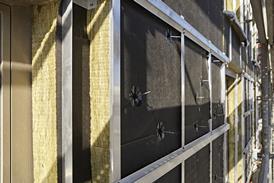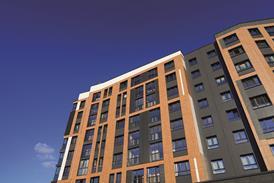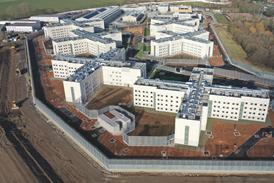- News

All the latest updates on building safety reformRegulations latest
- Focus
Close menu
- Home
- News
- Focus
- Comment
- Events
- CPD
- Building the Future
- Jobs
- Data
- Subscribe
- Building Boardroom
- Previous slide
- 1 of 1
- Next slide
| Structured cabling: Glossary of terms | |
| 62.5/125 micron | The common size of fibre optic cables |
| Attenuation | Loss of signal strength and integrity over a given length of cable |
| Balun | Balanced – unbalanced impedance matching connector. Connects balanced and un-balanced network cables together. |
| Bandwidth | The capacity of a medium to carry data bits. Measured in Hz |
| bps | Bits per second |
| CAT5 | 100 Mhz Category 5 data cabling as specified by the EIA/TIA standards authority |
| CAT5 E | Enhanced Cat 5 data cabling with more stringent tests and headroom. Still 100Mhz |
| Category 6,Cat6 | Proposed cabling standard to support up to 250 Mhz over UTP. Not yet ratified. |
| Category 7, Cat7 | Proposed cabling standard to support up to 600 Mhz over UTP. |
| Drop | Single cable outlet |
| EIA 568B | Now the most common UTP cable colour codes and pin allocation |
| Horizontal cabling | The structured cabling which connects the wall sockets to the network cabinet or wiring closet. |
| IEEE 802.3 | Physical cabling layer standards for Ethernet |
| Infrastructure | The collection of communication components (excluding active equipment) that together provide support for the distribution of information within a building or campus |
| Intranet | A large private company network often spanning many countries |
| IP | Internet Protocol. Along with TCP is used to track and deliver data packets over a network |
| ISP | Internet Service Provider. The company who provides a connection to the internet. |
| LAN | Local Area Network |
| MAN | Metropolitan Area Networks, Spanning a Town or City. |
| Multi mode | Fibre optic cable which supports multiple wavelengths. Diameter of 50 to 100 microns with a stepped refractive index. Can use inexpensive LED light sources. |
| NEXT | Near End Cross Talk. The effect of one cable pair’s signal on the adjacent pairs |
| Patch Cable | The cable connecting the network panel and the active switch or hub. |
| Patch panel | An array of connectors in the network cabinet to allow circuit rearrangements by plugging in patch cords. |
| Premises cabling | The complete cabling infrastructure for the transmission of voice, data and video throughout a given building. |
| Pulling tension | The maximum pulling force which can be applied to a data cable without affecting its electrical characteristics and consequently its network performance. |
| Reversed Pairs | The most common miswire where the single wires in a pair have been reversed. |
| RJ11 | Registered Jack number 11. Small line plug and socket used on telephone handsets and modem connections. |
| RJ45 | Registered Jack number 45. 8 pin plug and socket |
| SC connector | A connecter for terminating fibre optic cables. Can be snapped together to form a duplex connector for RX and TX transmissions. |
| Shielded | Cable with a braided or foil shield to keep out RFI and EMI. |
| Split Pairs | Where the single wires from two different pairs have been swapped. If the same at both ends will not affect short cable transmissions, but will fail over longer distance. A common fault |
| ST connector | Straight Tip. A connector for fibre optic terminations |
| STP | Shielded Twisted Pair copper cable |
| Structured cabling | The fixed solid core cabling which makes up the building wiring. |
| UTP | Unshielded Twisted Pair. 4 twisted pairs in one sheath. |
| WAN | Wide Area Network |


















